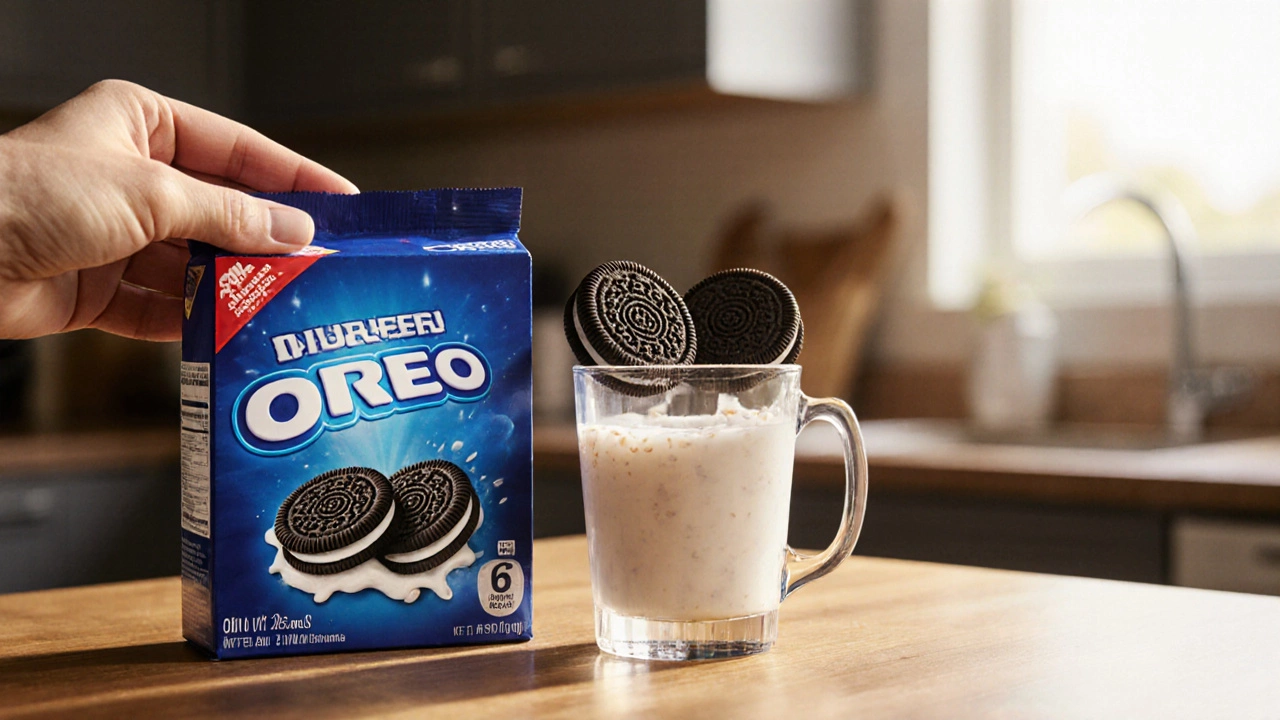Are Oreos Vegan? Everything You Need to Know
When checking Are Oreos vegan, the question of whether the classic chocolate sandwich cookie fits a plant‑based diet. Also known as Oreo vegan status, it hinges on the ingredient list and processing methods. If you’ve ever stared at a package and wondered if a bite fits your lifestyle, you’re not alone. Let’s break down the core criteria, so you can decide in seconds.
Key Ingredients That Decide Vegan or Not
The first entity you’ll run into is vegan candy, any sweet treat that contains no animal‑derived components. Oreos fall into the broader candy family, so the same rules apply. Look for dairy, whey, or milk‑derived ingredients—those instantly tip the scale toward non‑vegan. In the U.S., the standard Oreo recipe lists unflavored whey and lactose, which are animal‑based, making the classic version off‑limits for strict vegans.
Another crucial piece is plant‑based gelatin, a substitute made from agar‑agar, carrageenan, or pectin used to replace animal gelatin. Some “vegan‑friendly” Oreo variants swap traditional gelatin for these alternatives, especially in limited‑edition flavors. If the label mentions any of these plant gums, you’ve likely found a vegan‑compatible version. Keep an eye on the fine print—terms like “contains milk‑derived ingredients” override any plant‑based claim.
Underlying all of this is the concept of animal‑derived ingredients, components that originate from animals, such as whey, casein, or confectioners’ glaze made with shellac. Even if a product looks dairy‑free, a glaze used for shine can be animal‑based. That tiny detail is why many vegans scan the entire ingredient block, not just the obvious dairy words.
Putting these ideas together forms several semantic triples:
- Oreos are a type of vegan candy only when they exclude animal‑derived ingredients.
- Vegan candy requires plant‑based gelatin as a substitute for animal gelatin.
- Animal‑derived ingredients influence the vegan status of Oreo products.
Now that you know what to look for, let’s talk about how brands communicate vegan status. Some companies label a product as “vegan‑friendly” or use the vegan logo, which is a quick visual cue. However, labeling laws differ by country, and not every manufacturer follows the same standards. In the UK, for example, the Vegan Society trademark guarantees the product contains no animal ingredients and has not been tested on animals. If you see that badge on an Oreo bag, you can trust the claim.
Beyond official labels, there are community‑driven resources that keep a running list of vegan snack options. Websites and forums often share which Oreo flavors are safe, and they update the list when brands reformulate. Checking these sources before a grocery run can save you a trip back to the store. Remember, even a single change in the supply chain can flip a product from vegan to non‑vegan overnight.
What if you love the classic Oreo taste but can’t find a vegan version? DIY recipes let you recreate the cookie at home using plant‑based butter, cocoa, and a touch of maple syrup for sweetness. By controlling every ingredient, you eliminate the guesswork. Plus, you can experiment with alternative fillings—peanut butter, almond butter, or even a vegan cream cheese swirl.
In summary, the answer to Oreos vegan depends on the specific flavor, region, and packaging. The central rule is: no animal‑derived ingredients, no animal‑based processing aids, and a clear vegan label or reputable certification. Armed with the checklist above, you can spot the right product in seconds.
Below you’ll find a curated list of articles that dive deeper into each of these points—label reading hacks, ingredient breakdowns, vegan-friendly Oreo alternatives, and more. Explore the collection to fine‑tune your sweet snack choices and keep your dessert table fully plant‑based.

Are Oreos Vegan? Ingredients, Labels, and Alternatives Explained
Find out if Oreos are vegan, learn how to read labels, discover dairy‑free Oreo variants, and get a simple vegan Oreo cookie recipe.
View More




